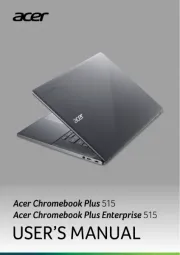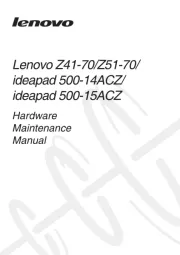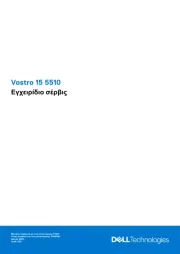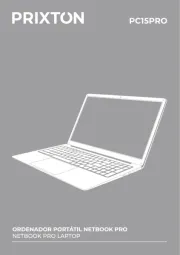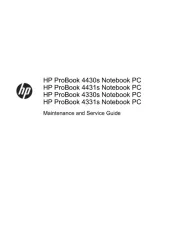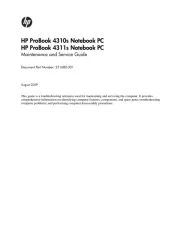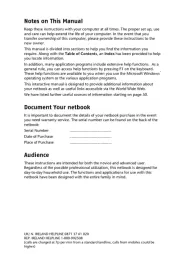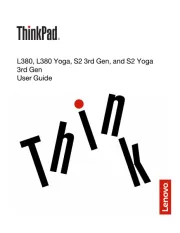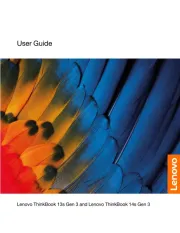Getac S400 Manual
Læs gratis den danske manual til Getac S400 (148 sider) i kategorien Laptop. Denne vejledning er vurderet som hjælpsom af 10 personer og har en gennemsnitlig bedømmelse på 4.5 stjerner ud af 5.5 anmeldelser.
Har du et spørgsmål om Getac S400, eller vil du spørge andre brugere om produktet?

Produkt Specifikationer
| Mærke: | Getac |
| Kategori: | Laptop |
| Model: | S400 |
| Bredde: | 348 mm |
| Dybde: | 258 mm |
| Højde: | 49.2 mm |
| Vægt: | 2900 g |
| Brugervejledning: | Ja |
| Produktfarve: | Sort |
| Produkttype: | Laptop |
| Skærm diagonal: | 14 " |
| Skærmopløsning: | - pixel |
| Kompatible hukommelseskort: | SD, SDHC, SDXC |
| Front kamera: | Ingen |
| Wi-Fi: | Ja |
| Bluetooth: | Ja |
| Batteriteknologi: | Lithium-Ion (Li-Ion) |
| Formfaktor: | Muslingeskal |
| Opbevaringstemperatur (T-T): | -40 - 71 °C |
| Antal HDMI-porte: | 1 |
| DVI-port: | Ingen |
| Ethernet LAN-porte (RJ-45): | 1 |
| Antal USB 3.2 Gen 1 (3.1 Gen 1) type-A-porte: | 3 |
| Udgange til hovedtelefoner: | 1 |
| Ethernet LAN: | Ja |
| Wi-Fi-standarder: | 802.11a, Wi-Fi 5 (802.11ac), 802.11b, 802.11g, Wi-Fi 4 (802.11n) |
| Processorkerner: | 2 |
| Driftstemperatur (T-T): | -21 - 60 °C |
| Ethernet LAN-datahastigheder: | 10,100,1000 Mbit/s |
| Intern hukommelse: | 4 GB |
| Indgangsspænding for vekselstrømsadapter: | 100 - 240 V |
| Frekvens for vekselstrømsadapter: | 50 - 60 Hz |
| Hurtig start guide: | Ja |
| Operativsystem installeret: | Windows 7 Professional |
| Certificering: | MIL-STD-810G |
| Bedste Wi-Fi standard: | Wi-Fi 5 (802.11ac) |
| AC-adapter inkluderet: | Ja |
| Indbygget kortlæser: | Ja |
| LED-baggrundsbelysning: | Ja |
| Intel® Wireless Display (Intel® WiDi): | Ja |
| Processorfrekvens: | 2.7 GHz |
| Processorserie: | Intel® Core™ i5 |
| Processor boost frekvens: | 3.4 GHz |
| Processortråde: | 4 |
| Processor-cache: | 3 MB |
| Processor cache type: | Smart cache |
| Intern hukommelsestype: | DDR3L-SDRAM |
| Maksimal intern hukommelse: | 16 GB |
| Samlet lagringskapacitet: | 128 GB |
| Lagermedie: | SSD |
| On-board grafikkort, model: | Intel® HD Graphics 4600 |
| Diskret grafikadaptermodel: | Ikke tilgængelig |
| On-board grafikkort: | Ja |
| Diskret grafikadapter: | Ingen |
| Indbygget grafikadapterfamilie: | Intel® HD Graphics |
| Indbygget mikrofon: | Ja |
| Mikrofonindgang: | Ja |
| Docking-stik: | Ja |
| ExpressCard-slot: | Ja |
| Opladningsport type: | DC-in-stik |
| Pegeredskab: | Touchpad |
| Numerisk tastatur: | Ingen |
| Intel® Hyper Threading Teknologi (Intel® HT Technology): | Ja |
| Intel® Turbo Boost Teknologi: | 2.0 |
| Slot til kabellås: | Ja |
| Processorproducent: | Intel |
| Processormodel: | i5-4310M |
| Antal VGA-porte (D-sub): | 1 |
| Kabellåseslids type: | Kensington |
| Garantibevis: | Ja |
| Antal installerede SSD'er: | 1 |
| SDD-kapacitet: | 128 GB |
| Trusted Platform Module (TPM): | Ja |
| Enhanced Intel SpeedStep Teknologi: | Ja |
| Udfør deaktivering af bit: | Ja |
| CPU-konfiguration (maks.): | 1 |
| Intel® VT-x with Extended Page Tables (EPT): | Ja |
| Intel® Virtualization Technology for Directed I/O (VT-d): | Ja |
| Intel® Virtualization Technology (VT-x): | Ja |
| Windows taster: | Ja |
| Antal serielle porte: | 1 |
| Bus type: | DMI2 |
| Processorgeneration: | 4th gen Intel® Core™ i5 |
| Intel® Trusted Execution Teknologi: | Ja |
| Intel® TSX-NI: | Ja |
| Konfliktfri processor: | Ja |
| Processor sokkel: | Socket G3 |
| Processor litografi: | 22 nm |
| Thermal Design Power (TDP): | 37 W |
| Maksimalt antal PCI Express-kanaler: | 16 |
| PCI Express slots version: | 3.0 |
| PCI Express-konfigurationer: | 1x16, 2x8, 1x8+2x4 |
| Fejlkorrigerende kode understøttet af processor: | Ingen |
| Tjunction: | 100 °C |
| Processor front side bus: | - MHz |
| Systembus-hastighed: | 5 GT/s |
| Processor driftstilstande: | 64-bit |
| Processor kodenavn: | Haswell |
| Intel® InTru™ 3D Teknologi: | Ja |
| Intel® Insider™: | Ja |
| Intel® Sikker Nøgle: | Ja |
| Intel® Anti-Theft Teknologi (Intel® AT): | Ja |
| Intel® Identity Protection Teknologi (Intel® IPT): | Ja |
| Intel® Quick Sync Video Teknologi: | Ja |
| Intel® AES Nye Instruktioner (Intel® AES-NI): | Ja |
| Intel® Demand Based Switching: | Ja |
| Termiske overvågningsteknologier: | Ja |
| Processor-pakke størrelse: | 37.5 x 37.5 x 4.7 mm |
| Processor ARK ID: | 80373 |
| Indbygget grafikadapter basefrekvens: | 400 MHz |
| Indbygget grafikadapter dynamisk frekvens (maks.): | 1250 MHz |
| Operativsystemets arkitektur: | 64-bit |
| Understøttede instruktionssæt: | AVX 2.0, SSE4.1, SSE4.2 |
| Maksimalt indbygget grafikadapterhukommelse: | 2 GB |
| Indbygget grafikadapter DirectX-version: | 11.2/12 |
| Maksimal intern hukommelse (64-bit): | 16 GB |
| Indbygget grafikadapter OpenGL-version: | 4.3 |
| Antal eSATA/USB 2.0-porte: | 1 |
Har du brug for hjælp?
Hvis du har brug for hjælp til Getac S400 stil et spørgsmål nedenfor, og andre brugere vil svare dig
Laptop Getac Manualer










Laptop Manualer
- Lexibook
- EMachines
- Gigabyte
- Packard Bell
- Compaq
- Tripp Lite
- Honor
- Viewsonic
- Odys
- CTL
- Medion
- Airis
- Fellowes
- Huawei
- Evga
Nyeste Laptop Manualer
